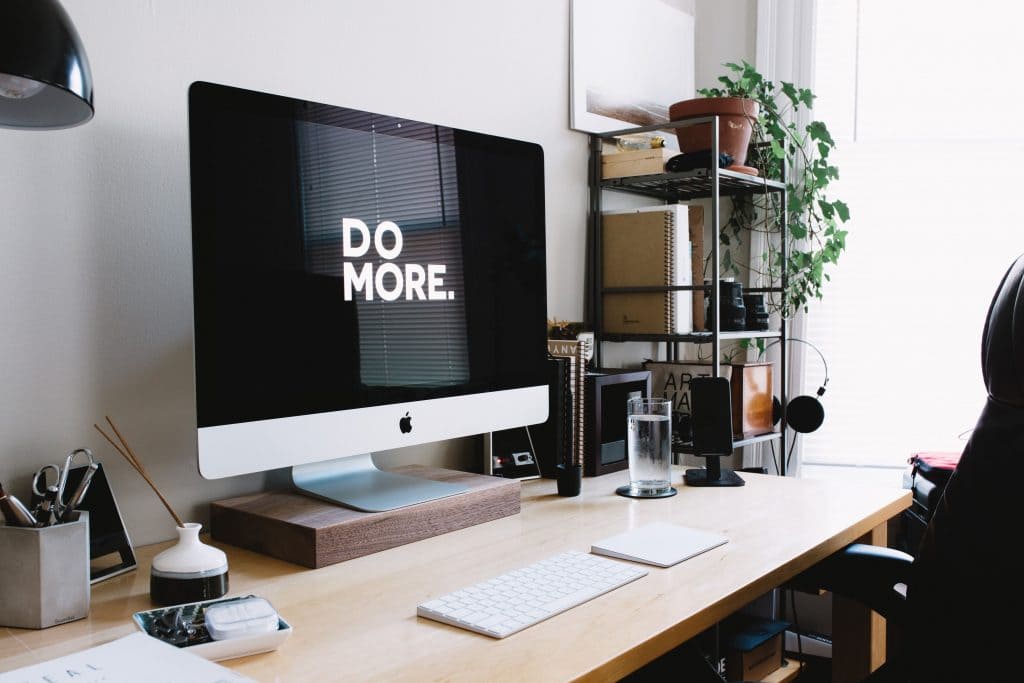Your Website – The Digital Front Door
A lot of brick and mortar stores talk about the importance of curb appeal and visual design: placing the most expensive brands at eye level in a grocery store, for example, increases the likelihood that a consumer will purchase them instead of the generic or budget brands. Similarly, seasonal window displays help entice customers into making purchases regularly. Just as store layout and design is important to brick and mortar stores, so is consistent branding to your ecommerce site.
Think of your website as your digital front door – it affects how your customers perceive you and will even have a direct affect on your sales. High quality web design does more than just make your website look good; it can have a positive effect on business operations, customer appeal, and revenue.
How to Design a Website?
In the digital arena, competition is fierce regardless of your industry. In a world where people can reach what they need at their fingertips, establishing a true niche in the market is more difficult than ever. One way to stand out from the crowd and win over potential customers is with your web design. When your site is easy to navigate, attractive, and intuitive, you will naturally draw more customers to your site through optimization. With more customers visiting your site, you organically increase the likelihood for conversion.

The following elements play a key role in your web page design:
Photography of Your Products, Facilities and Staff
When finding images for your site, it might be tempting to use stock images instead of hiring your own professional photographer. Unfortunately, stock photos lack the element of personalization required to establish branding to a targeted customer. By contrast, custom photos of your products, facilities, and staff members improve the customer experience. From an optimization standpoint, professional, customized photos can help your website rank higher on search engine result pages (SERPs). On the whole, non-stock photography helps paint a picture of your brand in the customer’s mind and instills a sense of trust.
Color Palette
The effect of color on the human mind is well documented. Your color scheme should make sense for your brand and purpose. For example, wellness brands tend to use green in their logos to communicate a connection with nature or well-being. Food brands tend to use bright colors such as red, orange, and yellow because they command action, are energetic, and may even stimulate hunger.
Here are some of the most common colors used in branding and when they might be appropriate:
- Blue is one of the most popular colors in website design. Navy and dark blue hues can communicate a sense of luxury and are often used for high-end brands, while light blues are associated with both tranquility and intelligence.
- Pink is often associated with candy and bakery brands because it can stimulate a person’s sweet tooth. Other applications include kids’ toys or Millennial appeal, particularly for rose gold.
- Black conveys a sense of formality and is a popular choice for B2B websites or wealth management and legal sites.
- Yellow is bright, cheerful, and energetic. It is one of the most popular choices for brands centered on children.
- Orange, like yellow, evokes a sense of energy and vibrancy, which makes it a popular choice for sport and fitness brands.
- Red commands action, which is why retail behemoths like Target use it in their branding.
When choosing colors for your brand, keep your company’s purpose and target audience in mind. It would not make sense, for example, to redo your logo in Millennial pink if the bulk of your customers are older adults. Use your knowledge of your customer base in every design decision you make.

Font Choice
Like color schemes, your typography can have a marked effect on customer perception. Visually, font choice can communicate brand personality and intention. For example, professional businesses that are in B2B industries often choose a classic serif font that exudes a sense of formality. Conversely, brands that cater to a younger or more casual crowd would do well to choose a modern, sans serif font style. No matter your company’s mission, a web design company can help you determine the best font choice for your brand image and desired personality.
Logo Design
Whether your company has been around for 5 years or 20, you have undoubtedly worked hard to create innovative, high quality products and services. Your logo design presents an opportunity to showcase what makes your business tick and how you stand out from the competition. A thoughtful, well-designed logo makes a statement to your target customer and connects them seamlessly to your brand. It should be prominently displayed on the homepage of your website and be one of the first things a customer sees when they navigate to your site.
Tone of Copywriting
Like font, color scheme, and logo design, your website’s content should reflect your brand and the needs of your target customer. A B2B business, for example, will opt for concise content without colloquialisms for other slang. A brand that posits itself as young, trendy, or hip, on the other hand, may use more creativity in their site’s copywriting. For example, shorter sentences, casual mannerisms, and hip language can make it seem more like the customer is having a conversation with a friend – which can be incredibly effective, if is matches with your overall brand image. A professional website development company can help you create website content that conveys intention consistent with your brand image.

Navigation and Organization
On the most basic level, simple tweaks to your website’s existing organization can make it easier for your target customer to find information and move through the sales funnel. Clunky navigation, on the other hand, can increase your bounce rate and send your customers straight to your competition. Consider, for example, that your average customer stays on your website for 15 seconds (tweet this). That’s how long you have to make an impression, and simple navigation can help improve on-page time. When working with an ecommerce web designer on your navigation and organization, consider:
● Optimization for mobile. Nearly 80% of smartphone users have made a purchase via mobile in the past 6 months. Having a website that is easy to navigate is essential for your ecommerce brand.
● Create content that’s easy to scan. Shoppers have notoriously short attention spans, so creating a site with plenty of white space that lends itself to easy scanning is a must. Bullet points (like this one) and numbered lists can help, too.
● Check for load times. If your content takes too long to load, customers are more likely to navigate away from your site and find what they need elsewhere. A web design company can help you optimize your site for navigation, such that your customers can access the information they need quickly, reducing your bounce rate.
Many companies overlook the importance of organization and navigation in their website marketing. The reality is that this simple aspect of website design has a large bearing on both customer conversion and sales.

Why You Need Professional Website Development?
Your ecommerce brand has its own unique mission, personality, and goals. Ideally, every channel of your ecommerce marketing will reflect them, including your website. Your brand’s message should remain consistent through every facet of your website – logo, pictures, font, color, content, and organization. A website design company can help make sure that your site is navigable, attractive, and optimized for both search and mobile viewing.
When your website accurately reflects your brand’s mission and values, you can attract more of your target customers and increase your conversions, which ultimately affects your revenue and sales. Consistency through your website’s design helps establish connection and trust. An ecommerce web designer can help you create a site that achieves your business goals.
What do you think are the most important elements of your website? What brand considerations have been the most important for the success of your ecommerce store? Let us know in the comments!







